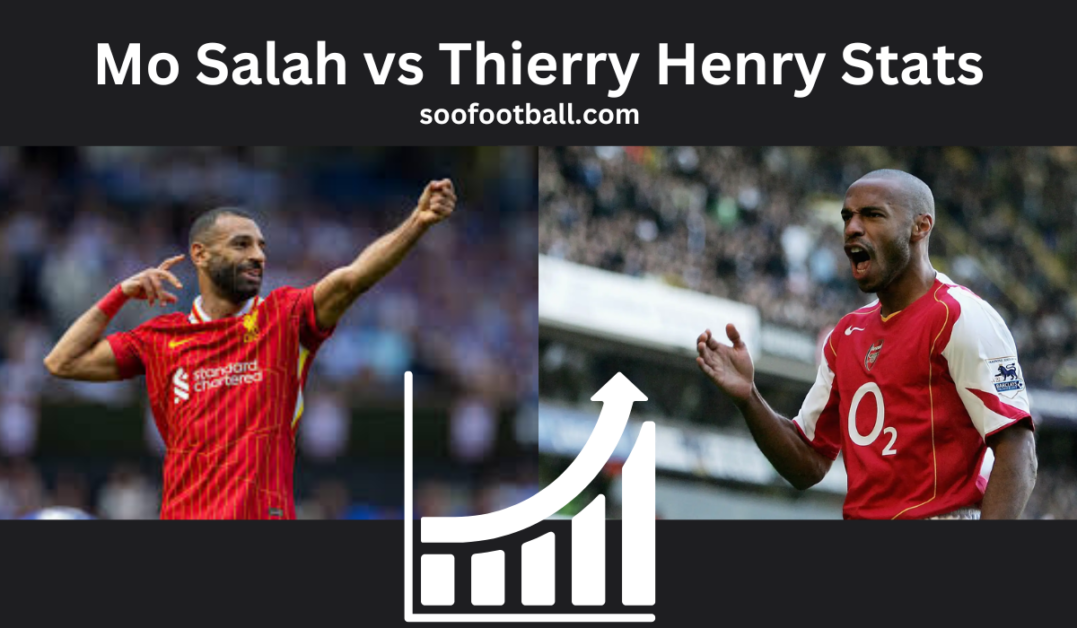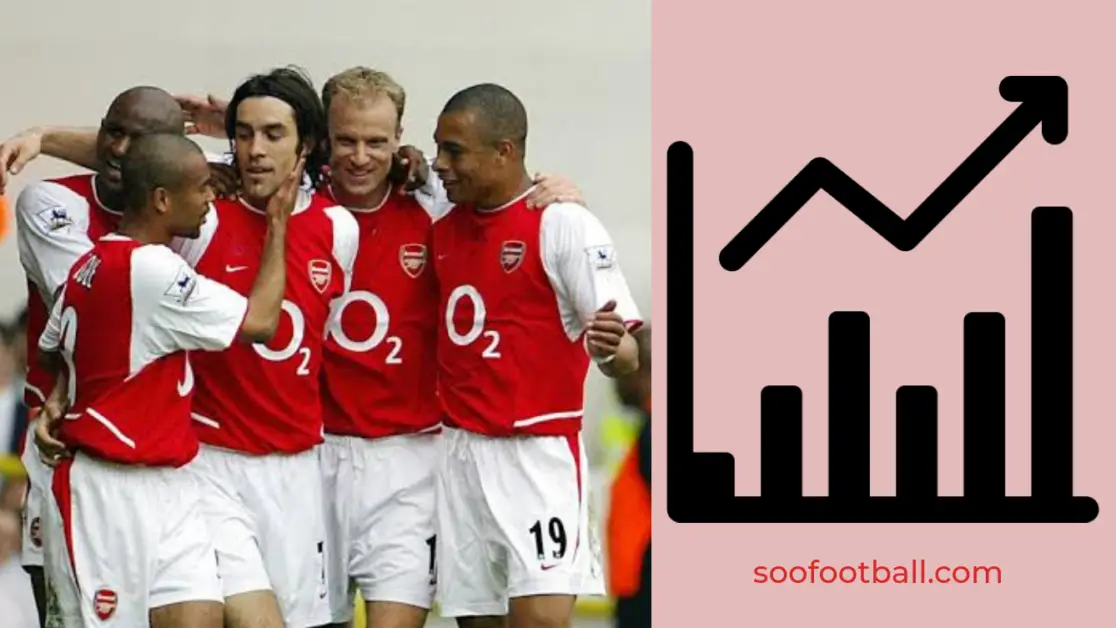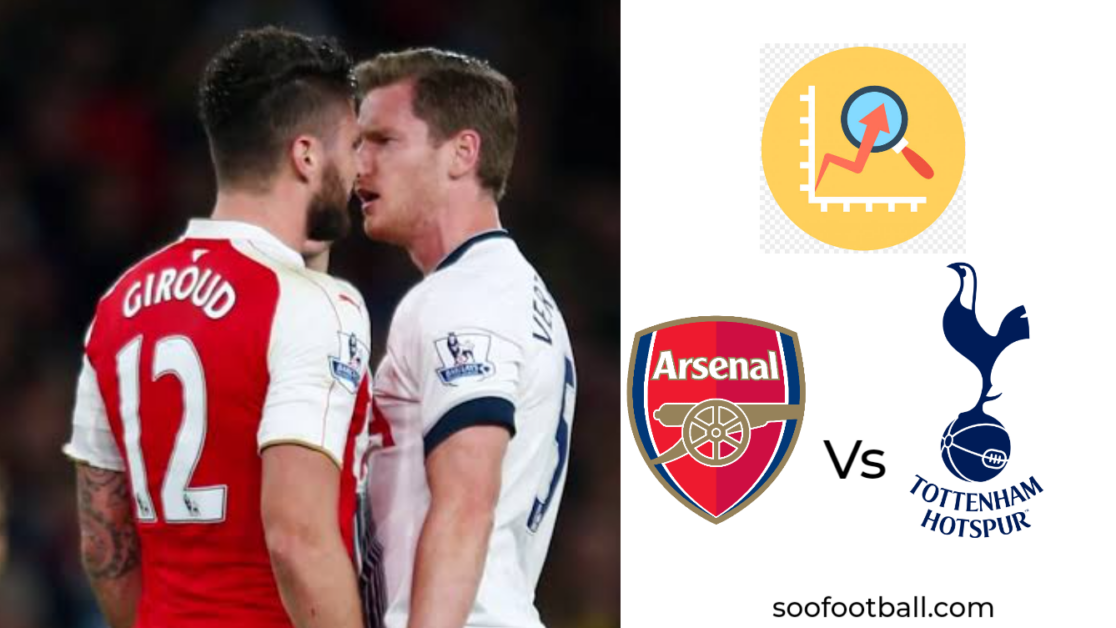Football often serves as the canvas for greatness, and the Premier League has been the stage where many legends have showcased their art. Two such icons who have left indelible marks on the league are Mohamed Salah and Thierry Henry. While they played in different eras, comparisons between these two legends are now inevitable, especially as Salah recently equalled Henry’s record of 175 Premier League goals. This milestone then makes it a necessity to look into Mo Salah vs Thierry Henry Stats, examining their respective careers, playing styles, and contributions that have elevated both players to the status of legends. It also raises a critical question: can Salah ultimately surpass Henry’s legacy?
Mo Salah vs Thierry Henry Stats
At first glance, the numbers tell an impressive story for both Salah and Henry. Thierry Henry spent eight seasons in the Premier League with Arsenal, from 1999 to 2007, with a brief return in 2012. In those years, he scored 175 goals in 258 matches, averaging an extraordinary 0.68 goals per game. In addition, he provided 74 assists, underlining his contribution not just as a prolific goal-scorer but also as a creative force for his teammates.
Salah, on the other hand, has been with Liverpool since 2017, where he has also accumulated 175 goals in the Premier League as of January 2025. However, he has achieved this milestone in 282 matches, which gives him a slightly lower goal-per-game ratio of 0.62. Yet, Salah surpasses Henry in terms of assists, with 82 to his name, showing his ability to contribute to the team beyond simply finding the back of the net.
When judged purely on these stats, both players appear evenly matched. But football is much more than numbers on a scoreboard. It’s about influence, style, and the ability to define moments that transcend the game itself.
Consider Reading: Mo Salah vs Eden Hazard Stats
Playing Styles and Positions
One of the key differences between Salah and Henry lies in their playing styles and roles on the pitch. Thierry Henry was primarily a central striker, known for his explosive pace, precise finishing, and incredible technical ability. While he often drifted to the left flank to exploit his pace and cut inside onto his stronger right foot, his primary role was as the focal point of Arsenal’s attack.
Henry’s iconic goals often involved a burst of speed, a deft touch to beat defenders, and a composed finish that left goalkeepers helpless. This combination of power and finesse made him one of the most feared forwards of his generation.
Salah, in contrast, is primarily deployed as a right winger in Liverpool’s system. His game is characterized by blistering pace, exceptional dribbling, and an uncanny ability to cut inside onto his left foot, making him a nightmare for defenders. Unlike Henry, Salah’s role isn’t solely about scoring goals. He operates within a more fluid attacking system where his movement creates space for others, and his ability to provide assists has become an increasingly vital part of his game.
This distinction in roles highlights an essential aspect of this comparison: while Henry was the undisputed centrepiece of Arsenal’s attack, Salah’s contributions come within a more collective system at Liverpool. Both approaches have their merits, but they underline the challenges of comparing two players from different eras and tactical systems.
Consistency and Longevity
Consistency is the hallmark of any great player, and both Salah and Henry have demonstrated this in abundance. Henry’s best years came during Arsenal’s golden period, particularly the famous 2003-2004 “Invincibles” season when Arsenal went unbeaten throughout the league campaign. Henry’s ability to deliver in high-pressure situations and against top opposition solidified his reputation as a big-game player.
Salah, on the other hand, has been a model of consistency since he arrived at Liverpool. From breaking the Premier League record for most goals in a 38-game season with 32 in his debut campaign to maintaining his scoring prowess year after year, Salah has shown an extraordinary ability to sustain his performance levels.
Importantly, Salah’s longevity in the league, and the intensity of his performances, have coincided with Liverpool’s resurgence under Jürgen Klopp. Salah has played a central role in Liverpool’s domestic and European triumphs, including their historic 2019-2020 Premier League title win, which ended a 30-year drought.
While Henry’s dominance in the league was slightly shorter in duration, his peak years were arguably more impactful in terms of individual brilliance. Salah, however, has the opportunity to extend his dominance further, given his sustained fitness and commitment to Liverpool.
Impact on the League and Legacy
Legacy is perhaps the most subjective aspect of this comparison, as it involves not only stats but also the broader influence of a player on the league and the sport. Thierry Henry’s legacy is intricately tied to Arsenal’s identity during the early 2000s. His style, flair, and ability to produce magic moments made him a player who transcended club allegiances. Even rival fans could not help but admire his artistry.
Henry was also pivotal in revolutionizing the striker’s role in English football. At a time when traditional target men were still prevalent, Henry’s ability to combine athleticism with technical finesse and creativity set a new standard for forwards.
Salah’s impact, meanwhile, is similarly transformative but in a different way. He has redefined what it means to be a goal-scoring winger, combining a wide player’s traditional attributes with a striker’s clinical instincts. Moreover, Salah’s success has had a cultural and social impact, as he has become a symbol of hope and pride for millions across the Middle East and Africa.
In terms of honours, Henry’s accolades include two PFA Player of the Year awards and four Premier League Golden Boots. Salah, too, boasts three Golden Boots and was named the PFA Player of the Year in 2018. Both players have been named in the PFA Team of the Year multiple times, further cementing their status among the league’s elite.
A Unique Angle: Goals in Context
One area where Salah’s achievements stand out is the context in which his goals have been scored. The Premier League has become significantly more competitive since Henry’s era, with more teams capable of challenging for the title and tighter defensive setups. Salah has faced these challenges and thrived, proving his adaptability and resilience.
Henry, however, played in an era where Arsenal often dominated opponents, giving him more opportunities to capitalize on weaker defences. This isn’t to diminish Henry’s achievements but rather to highlight how the league has changed over time.
Additionally, Salah’s goals often come at critical moments for Liverpool. Whether it’s his iconic solo goal against Manchester City or his clutch strikes in tightly contested matches, Salah has a knack for delivering when it matters most.
Conclusion
When comparing Mo Salah vs Thierry Henry stats, the verdict ultimately depends on what one values most in a footballer. If it’s about individual brilliance, flair, and redefining a position, Thierry Henry might edge it. His influence during Arsenal’s peak years and his elegance on the ball make him a player who will forever be remembered as one of the Premier League’s greatest.
However, if consistency, adaptability, and the ability to deliver in an era of unprecedented competition are the criteria, Salah’s case becomes equally compelling. The Egyptian King has not only matched Henry’s goal tally but has done so while operating in a more challenging tactical environment and contributing significantly to team success.
As Salah continues his career, he has the opportunity to surpass Henry not just in numbers but also in influence. For now, what remains clear is that both players are among the Premier League’s finest, and their legacies will continue to inspire future generations of footballers.





